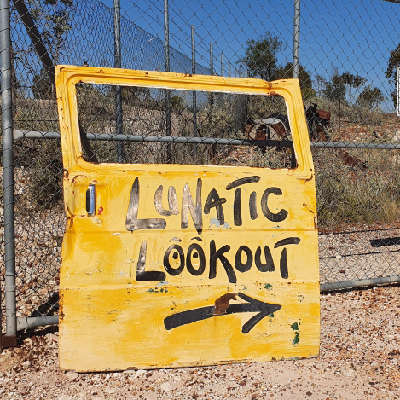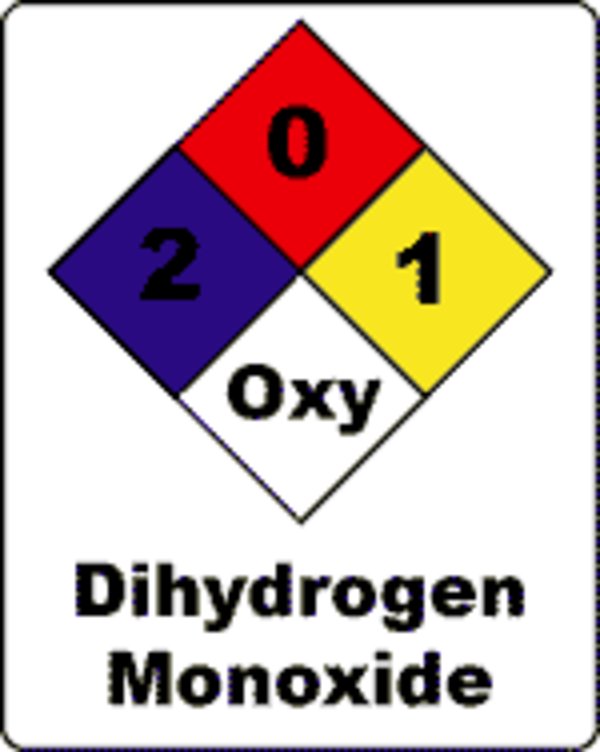Peter Dutton’s nuclear plan is just terrible public policy.
The truth is that, in an Australian context, with nuclear power more expensive per kilowatt hour than either grid scale solar & storage or coal, nuclear just doesn’t make economic sense.
The UK has a mature nuclear industry. Its new Hinkley Point C plant, started in 2016, is now expected to not be complete until 2031, and costs £35bn.
So how much would it cost to replace all of Australia’s coal power plants with nuclear ones?
We’ll, at current exchange rates, £35bn — that’s the cost of just one Hinkley Point C sized reactors — works out to A$67.6 billion.
So building just 10 nuclear reactors the size of Hinkley Point C costs $A676bn, making the AUKUS subs look like Home Brand corn flakes in comparison.
(Just for comparison, ScoMo’s AUKUS subs cost $368bn, and Daniel Andrew’s Suburban Rail loop is estimated at around $100bn.)
That’s assuming Australia, starting from scratch, could build nuclear plants as quickly and cheaply as the UK, which was one of the first nations on Earth to split the atom.
So is it debt & deficit to fund this? Big new taxes? Even by the LNP’s own measuring sticks, it’s a crap policy!
The Australian Federal Government has previously examined the prospect of building nuclear power plants in the Switkowski report: https://webarchive.nla.gov.au/awa/20080117214749/http://pandora.nla.gov.au/pan/79623/20080117-2207/dpmc.gov.au/umpner/docs/nuclear_report.pdf
The big thing that’s changed since it was published is that grid solar + storage is now cheaper than coal or nuclear power.
So would you support holding up the closure of coal plants for 15 years until nuclear plants are completed, then paying substantially more on your power bills, while the federal government pays hundreds of billions of dollars in government subsidies, while also hiring thousands of additional public servants to regulate it all?
#auspol #nuclear #ClimateChange #australia @australianpolitics
@ajsadauskas @australianpolitics The key purpose of this policy is NOT to build nuclear power plants. It is to block solar/wind, storage and pumped hydro and to drain all investment in them. Investors will hold off funding renewables because nuclear is coming (in 15 years or more). In the meantime Gina will be selling coal as fast as she can to all the aging inefficient coal plants in the country.
The NEM is 5,000 kilometres long, from Cairns to Hobart and from Sydney to Adelaide. Renewable power anywhere along that line will feed the grid. So the wind not blowing anywhere between Cains and Hobart is ludicrous. What we need is much more solar/wind attached to the NEM so local shortages can be smoothed out. Baseload is last century thinking. This century is all about distributed power generation. Why have one power station with 4 boilers when for the same money you can have 20 wind farms each with 50-80 wind turbines and no single point of failure.
The key purpose of this policy is NOT to build nuclear power plants. It is to block solar/wind, storage and pumped hydro and to drain all investment in them.
It’s not a coincidence that they started pushing for nuclear after they lost government and wouldn’t be expected to actually implement it. While they were in government and able to act, they were pushing for government funded coal plants.
Credit: someone off twitter before musk started stuffing it up.
Honestly don’t know how he sleeps at night. Or does he genuinely not believe in the threat of Climate Change? The Liberals and their voters are on the wrong side of history
Dutton’s position here as many have pointed out is to stall and not actually to build nuclear.
I think nuclear has a place as we need to move the world off carbon ASAP (That place basically being India and China where there is a lot of dirty coal that needs to be shutdown ASAP).
If we really wanted to do something nuclear I’d suggest working on building modular reactors that we can build in factories and deploy to places where its harder for renewables to make sense, that said i’d wager a better financial proposition would be to invest in alternative renewables, say more tidal technology. If we want to support the pacific being able to provide tidal power generation seems like an easy win, that also provides significant political influence (which waned under the last conservative government).
Now if i was a National i’d be pushing for lots of renewables in the country, all that construction and those jobs supporting the new infrastructure, and yet they don’t…
@ajsadauskas @australianpolitics I don’t believe it’s an honest policy though. Sure, some zealots in the party and their supporters at Sky News etc. truly believe it can happen, but most of them probably realise it’s hogwash. So I have to assume that the point is (if they were elected, God forbid) to spend a good decade delaying closure of coal plants and scrapping as much renewable transition as possible until they finally “find out” that the economics don’t make sense. Probably some good consultancy money for mates in the meantime…
Seems cynical, I know, but I just can’t believe they are acting in good faith. As you say, it’s just too dumb…
@stephengentle @ajsadauskas @australianpolitics It isn’t even that.
It is just a way of signalling that they hate the anti-nuke greens.
@abartlet @ajsadauskas @australianpolitics Perhaps I am giving them too much credit?
deleted by creator
@ajsadauskas @australianpolitics
What would »grid scale solar & storage« cost, and how long would it take?
This is the competition:
- Nuclear power plants
- Storage of the same scale, filled by solar of the same scale
No one in the whole world has ever built (2). There is no mature industry, and no technology even matching the only grid scale storage we have so far (pumped hydro).
For (1), there are several international players with established designs.
I wouldn’t stop either one.
Yes! The solution isn’t one, but many
@Ardubal @ajsadauskas @australianpolitics I think the issue with nuclear reactors in the Australian context is that we have no nuclear power construction industry, we don’t have a workforce, we don’t have the education system geared to produce a workforce nor are there standardised proven working designs that we can cookie cutter. The NIMBY battles haven’t started yet nor the court challenges. We need to replace coal in the next 10 years and to do it the nuclear way will take 20 to 30 years if at all. All the while power produced by nuclear reactors will become even more expensive than renewables and is certainly not economic.
Other than that, there isn’t a problem with nuclear reactors. The LNP approach of pivoting to nuclear by defunding renewables is really ludicrous as we can’t afford to wait.
#nuclear #nuclearenergy #renewables #renewableenergy#NuclearMadness Down Under. A product of #NuclearBullshit being spewed by an an untold number of #NuclearGrifters. #JustSayNO. @Lats @Ardubal @ajsadauskas @australianpolitics
@Lats @ajsadauskas @australianpolitics The problem as I see it is that solar+wind+storage alone will not get you there ever. It will go up to 40% solar+wind, then maybe 10—30% with storage+solar+wind (depending on your technooptimism). And then you start replacing everything built every 20 to 30 years. Buys time, but not sustainable.
What you say is true: you need to build up the entire nuclear industry. International cooperation for bootstrapping will be important. Better get started.
@Ardubal @ajsadauskas @australianpolitics the key to this is that it’s not an either or situation. If we want to do nuclear then it can’t be by defunding renewables like that LNP and many populist pundits want. We need to decarbonise our economy as quickly as we can. Stuffing around trying to derail renewables really is a recipe for disaster.
@Lats @ajsadauskas @australianpolitics
Well, right now there is much more derailing of nuclear in the hope of solving storage than derailing solar+wind in the hope of re-enacting a nuclear buildup (like in France, Japan, Germany (1970s-80s), Ontario, China, India…) going on.
Get both on the road, they do not much compete for resources. It will be faster than only one.
@Ardubal @Lats @australianpolitics We are explicitly discussing the situation in Australia here.
(For what it’s worth, I do think nuclear power has an important role to play in some countries, especially those with an established nuclear power sector. Australia is not among them.)
And in Australia, the right-wing federal opposition (led by Peter Dutton) has put forward nuclear quite explicitly instead of more renewables and storage (as proposed by the current government).
That’s the context here, and why it’s an either/or discussion in an Australian political context:
"The federal Coalition has declared at the Cop28 climate summit that it will back a global pledge to triple nuclear energy if the opposition leader, Peter Dutton, becomes prime minister, but will not support Australia tripling its renewable energy.
…
“Some observers questioned how the Coalition’s plan to slow renewable energy expansion would avoid power blackouts as old and increasingly failing coal-fired power plants closed over the next decade. O’Brien acknowledged in his speech that 80% of Australia’s “baseload power” was expected to leave the grid by 2035.”
There’s a much broader context to all this.
Dutton’s party has a long history of promoting climate scepticism, and accepting donations from coal mining firms.
And as for Peter himself, well…
"Immigration Minister Peter Dutton has been overheard quipping about the plight of Pacific Island nations facing rising seas from climate change.
"Noting that today’s meeting on Syrian refugees was running a bit late, Mr Dutton remarked that it was running to “Cape York time”, to which Mr Abbott replied, “we had a bit of that up in Port Moresby”.
“Mr Dutton then added, “time doesn’t mean anything when you’re about to have water lapping at your door”.”
@ajsadauskas @australianpolitics Given the accelerating collapse of ecosystems globally, developing nations barely have a shot at evolving the energy sector, let alone industrialized nations that easily keep renewables and nuclear at a 10% market share.
Whether you do a deep-dive into #6thMassExtinction or not, we’re in one.
@NuModular @australianpolitics My post is quite explicitly not about developing nations.
It’s about Australia.
Nuclear might make sense in other parts of the world, but it is not a substitute for renewables and storage in Australia.
@ajsadauskas @australianpolitics My post explicitly scaled less-to-more developed, industrialized nations. You isolate value spaces because you can’t, or won’t, do the “developed” math.
Reap what you sow. Your ilk are why fossil fuels so easily maintains a 90% market share, and future generations are in genocidal jeopardy.
deleted by creator
People seem to be under the impression that solar power is the cheapest source of power while strictly true it is only so under a very specific set of circumstances.
Firstly storage is out of the question. Outside of pumped storage chemical storage is the best option and it has many drawbacks. Batteries are inefficient to begin with and the materials used are hazardous to the environment and human health and are of limited recyclability. In addition the resources needed for these batteries are a leading cause of slavery globally.
Solar panels under the right circumstances can be cheap but depending on the time of day, weather and location are only that efficient for 5 hours a day. Notably the power is not available when needed as solar panels produce little to no power either side of peak sun and obviously none at night. In addition there are some elements of a solar panel that are not readily recyclable making them a not infinite and environmentally hazardous resource. In addition the cost of recycling is not factored into the cost calculations.
More important to this conversation is what makes nuclear so expensive. The short answer is the QA is not cost efficient because so few plants are built and none of them use the same parts, there is noneconomy of scale. Another problem is that the assessments made on solar panel efficiency are made on the peak of what is possible with today’s tech whereas most nuclear facilities are 20 years old or older. So the comparison is being made between plants designed 30 years ago and the best solar has to offer right now. Nuclear has arguably progressed the most out of all power generation over that time while the fundamental concept remains the same things such as modular designs, reactors that recycle their waste materials and designs capable of providing heat for industrial purposes make the cost drop dramatically eclipsing the cost effectiveness of every other energy source by a wide margin.
In the past hysteria has created a negative public perception of nuclear that persists to this day. The waste is considered a large problem but in reality all global nuclear waste could fit in an Olympic swimming pool. This waste could theoretically be recycled and used as fissile material in another reactor thereby reducing it to a fraction of that size and render its hazardousness to essentially nothing.
The question then becomes if nuclear is so overwhelmingly dominant in its efficiency and cost effectiveness then why is it not used? Why is there this campaign of solar instead? and why not wind or something else?
The answer is simple: solar panels are the only renewable energy source that relies on highly comoditizable materials and because of its operating hours requires even more commoditizable materials to store for ready use.
If you take a look at the people present at these solar events, sponsoring organisations, etc they are they same big energy providers including hydrocarbon providers that are seeking to shift their business into the solar model, the most profitable renewable model.
Nuclear energy on the other hand is globally mainly managed as a state resource. The government owns it and provides power as a public utility which cuts out corporate profits.
Well, grid battery storage is using LFP batteries that don’t actually have any of those expensive and dangerous materials.
Second, OP isn’t talking about solar, they’re saying solar and storage is cheapest. The cost of batteries is dropping like a rock, and we even have sodium batteries ramping up production and available for sale right now. They don’t contain anything valuable.
Nuclear would get cheaper if we were manufacturing dozens of plants each year, but economies of scale work for solar and battery production too. It’s not a magical advantage unique to nuclear. Batteries got something like 30% cheaper last year.
A nuclear plant that we started building today would maybe be up and running by 2035, and it’d be expected to operate until 2075 or so. Even if you make a case for nuclear vs 2024’s solar and storage, it’d actually be up against 2035’s solar and storage on opening day. And it’d need to be competitive vs solar and storage for its entire lifetime. It isn’t.
While nuclear has traditionally been government owned and operated, so was the power grid and telephones. Any new nuclear is going to bring in private investment and non-government ownership like Hinkley Point C did, and they’re going to want those corporate profits.










